Indigenous Leafy Vegetables and Herbs in Nigeria
Indigenous leafy vegetables are the most affordable and readily accessible sources of micro-nutrients.
Vegetables are often mentioned as leafy or soft edible fruits which may be cooked in stew/soup or eaten raw as a salad in Nigeria.
In Nigeria, as with most other tropical countries of Africa where the daily diet is dominated by starchy staple foods, African leafy vegetables combats hunger and malnutrition by helping in meeting the daily requirements of the body’s nutrients.
Food particularly soups will be lacking and perhaps totally unappealing without the luscious greenness of the vegetables used.
A seemingly ‘dead’ or old soup can be brought back to life with a sprinkle of fresh green vegetables.
Table of Contents
Indigenous Leafy Vegetables Health Benefits
Nigeria is gifted with varieties of traditional leafy vegetables which are not just consumed for their rich food nutrient content but also for medicinal importance
Richly blessed with vegetation, we have a huge range of agricultural products, and top on this list of food produce are indigenous leafy greens.
Remarkably rich in vitamins and antioxidants, these nutritious fresh vegetables form the root of most Nigerian soups and quite many dishes.
Indigenous Leafy Vegetables in Nigeria
Vegetables play a vital role in the human diet and nutrition. In Nigeria, the good news is that indigenous leafy vegetables are within your means and fast to cook.
It is rich in various vitamins such as A, C, K, and B- carotene; as well as minerals such as potassium, iron, and zinc that help human health development
Furthermore, incorporating Indigenous leafy vegetables in daily diet has been strongly associated with stress management and decrease in risk for the major diseases
Indigenous Leafy Vegetables Challenges and Strategies for Improvement
Even though vegetables are known to be an integral part of the various region of Nigeria, a significant proportion of our indigenous vegetables are underutilized due to high perishability.
Secondly, we lack a good preservative culture and thus suffer heavy post-harvest loss. There is a lack of information regarding the management of the loss of these vegetables.
Thirdly, a small portion of our traditional vegetable species is cultivated domestically while some are seen growing in the wild.
Indigenous green leafy vegetables
Also, many people neglect or do not embrace it may be due to a lack of information on its nutritional composition and health benefits.
Therefore, it’s good to have a fair knowledge of the nourishing power of these greens to a large extent to assist you effectively in connecting with them.
For this reason, let’s have a good look at some of the most popular Nigerian green vegetables that grace the table in most homes.
Without much ado, here it goes…
Indigenous Leafy Vegetables in Nigeria
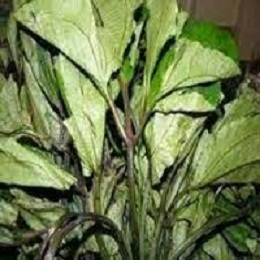
- English Name: Fluted Pumpkin Leaves
- Local Name: Ugu (Igbo), kabewa (Hausa)
- Botanical Name: Telfairia Occidentalis
Ugu is of the most popular indigenous leafy vegetable in Nigeria used for both medicinal and culinary purposes.
It is rich in minerals such as calcium, iron, potassium, magnesium, and folic acid which make it highly nutritious.
It’s used for vegetable soups like Edikankong and Efo riro
- English Name: Jute leaves, saluyot leaves, Jews mallow
- Botanical Name: Corchorus Olitorius
- Local Name: Ewedu (Yoruba), Rama Ayoyo (Hausa/Fulbe), Kerenkere (Igbo
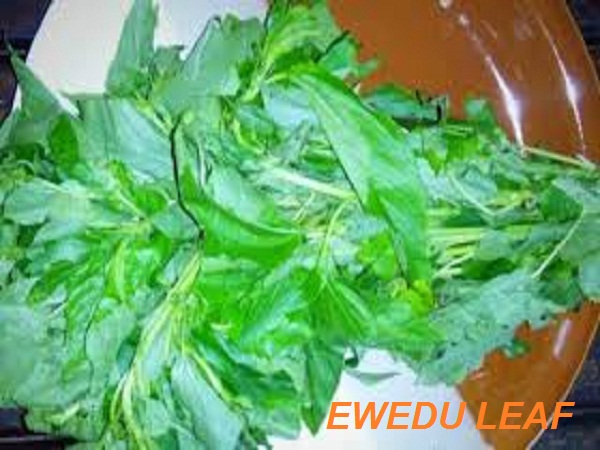
Ewedu Leaf is one of the many indigenous leafy vegetables used in making soups, mostly by the Yoruba people of Nigeria.
Also called Jute leaves in the English Language, Achingbara in Igbo, and Rama in Hausa
For Information Please Read: Ewedu Leaf Health Facts: 13 Amazing Health benefits
- English Name: Bitter Leaf
- Local Name: Onugbu (Igbo), Efo Ewuro (Yoruba), Shakwa shuwaka (Hausa), Etidot (Cross River State of Nigeria)
- Botanical Name: Vernonia amygdalina
As the name suggests, the plant is very bitter and is used in preparing the popular Nigerian bitter leaf soup.
Learn How to Cook Nigerian Soups
Bitter Leaf Benefits
Apart from its culinary purposes, in traditional Nigerian medicine, it is used to treat Fever, malaria, hepatitis, diarrhea, dysentery, and cough due to its therapeutic value and curative potency.
- Okazi, Uziza, & Utazi leaves
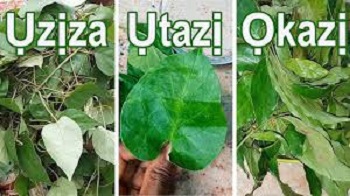
Okazi/Ukazi/Afang Leaf (Gnetum africanum, eru or African jointfir) is a vine gymnosperm species found natively throughout tropical Africa.
Read more on the Nutritional and Differences between Okazi, Utazi, & Uziza leaves
Gnetum africanum is traditionally a wild vine and is considered to be a wild vegetable.
The leaves are tough (hard) and glossy and look more like the leaves of an orange tree.
Both the seeds and leaves of this plant are edible.
- Uziza Leaves (False Cubeb Leaves)
Uziza (piper guineense) is an African Plant of which two parts are used: leaves and seed. It is called Uziza in Igbo and Ata iyere in Yoruba.
The glossy leaves which have a slightly peppery taste are green when fresh and darker green when dried or ground.
Uziza is a popular local spice mainly used in Nigerian dishes. The spice has nutritional, culinary, medicinal value and insecticidal value.
Utazi /Otazi Leaves (Gongronema Latifolium) are heart-shaped leaves that have the characteristic slightly bitter-sweet taste, especially when you eat it fresh.
Utazi and Fertility
A recent scientific study showed that using Utazi leaves in nutrition helped to increase the effectiveness of reproductive hormones and help to raise low sperm count.
- English Name: Waterleaf
- Local Name: Gbure (Yoruba)
- Botanical Name: Talinum Triangulare
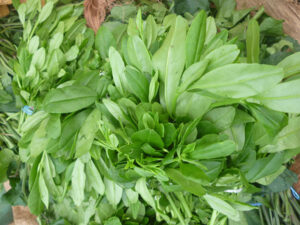
Talinum triangulare belongs to the family of Portulacaceae. It is a short-term perennial succulent shrub, which is sensitive to cold conditions.
In Nigeria, the local name is bologi, which is pronounced ‘gbologi’, in the Ukwani dialect of Delta state. It can grow wild on its own without cultivation
Water leaves are used in the preparation of soups such as Edikaikong, Efo riro, vegetable yam, etc.
It tends to increase the volume of water in it hence the name “Water leaves”.
- English Name: African spinach, “Green”
- Local Name: Inine (Igbo), Efo Tete (Yoruba), tete eleegun(yoruba), allayahu (Hausa)
- Botanical Name: Amaranthus Hybridus
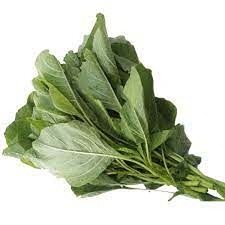
Amaranthus hybridus (green tete or morogo) is locally known in Nigeria as tete (Yoruba), inine (Igbo), alaiyaho (Hausa), and shorokotom yokotor (Ukwani)
Also, known as “Green” in the native market due to its color, this leafy vegetable is the second most popular leafy vegetable after Ugu.
It’s used in the making of various Nigerian dishes.
- English Name: African eggplant leaf (Garden egg leaf), Gboma
- Local Name: Akwukwo Anara (Igbo), Efo Igbo (Yoruba), Ganyen gauta (Hausa)
- Botanical Name: Solanium marcrocarpon

Garden Egg leaves are used in the preparation of vegetable stews and yam dishes by some people. The leaves have a very bitter taste but are very nutritious.
- English Name: Moringa Leaves
- Local Name: Igbo: “Odudu oyibo”,”Okwe olu”, “Okwe oyibo”, “Uhe”, “Oku-ghara-ite”
- Yoruba: (“igi iyanu”, “malero”, “Ewe igbálé”, “Ewele”, “Ewé ilé”, Idagbo monoyé ) Hausa: Zogale
- Botanical name: Moringa Olefera
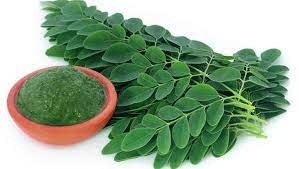
Moringa is one of the most nutritious plants ever studied and it includes two important classes of compounds: Antioxidants and Anti-Inflammatory
The root, fruit, leaves, seeds, and bark of this tree are used for medicine.
Learn more on Moringa Super Nutritional Benefits
- English Name: Mint leaves
- Local Name: Na’a Naa (Arabic)
- Botanical name: Mentha
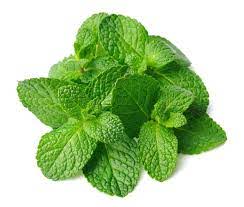
Mint leaf is a fragrant herb that is mostly used to make stuff like air fresheners. It should not be mistaken for scent leaf (Efinrin/nchawun).
In the native market especially with the Hausa vendors, mint is known as “Na’a naa”. There is no Igbo name for mint leaves yet; it is a western version of scent leaves.
- English Name: Clove Basil
- Local Name: Nchuawun (Igbo), Efirin (Yoruba), Daidoya (Hausa), Ntong (Efik), Aramogbo (Edo)
- Nigerian Popular Name: Scent Leaf
- Botanical Name: Ocimum gratissimum
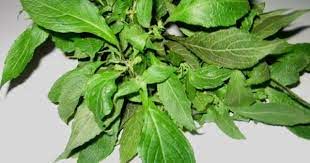
“Efirin” (scent leaf) is an important vegetable used in the preparation of foods such as pepper soup, ofe akwu, Yam porridge, Vegetable soups, etc.
As the name implies, it gives a wonderful aroma to the meals it’s prepared with. It’s also commonly grown around houses as a mosquito repellent.
- English Name: Spring onions
- Local Name: Alubosa elewe (Yoruba)
- Botanical name: Scallion

A scallion has a moderately mild onion flavor and is commonly used as a vegetable, either raw or cooked.
It is associated with other names including green onion, spring onion, salad onion, table onion, etc.
- English Name: African Rosewood leaves
- Local Name: Oha / Ora leaves
- Botanical name: Pterocarpus mildraedii

Oha leaf is very popular in the Eastern part of Nigeria. Fresh Oha leaf is the main ingredient in the preparation of the famous Oha/Ora soup.
It retains its greenish leaves throughout the year and contains many nutrients such as iron calcium, amino acids, iron, potassium, fibre, vitamin A and C, etc.
- English Name: Curry leaf “sweet Neem leaves”
- Local Name: Efirin Oso (Yoruba), Marugbo sanyan (Yoruba)
- Botanical Name: Murraya koenigii
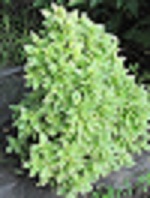
In Nigerian meal preparation, it is added to stews, meats, and fish to add flavor to the dishes. It comes with small pinnate leaves which are highly aromatic.
The leaves are chewed to lose weight, and improve eyesight and cataract; it is used also as a color for hair and nail and on the skin.
Conclusion
These are some of the leaves (not all) that are common in Nigeria. Play around with preparation and use different spices to bring out the taste of these healthy vegetables.
Remember that with vegetables, it is important you avoid overcooking so as not to destroy most of the heat-sensitive nutrients in them.
FAQs
What are indigenous leafy vegetables?
They are neither cultivated nor grow in the wild under different climatic conditions.
Indigenous leafy vegetables for example Bambara groundnut, cowpea, cleome, jute mellow, amaranth typically grow in Gauteng, kwazulu Natal, Mpumalanga, Northwest, and Limpopo provinces in South Africa
List of local vegetables in Nigeria
Indigenous leafy vegetables and herbs found in Nigeria
- English Name: Fluted Pumpkin Leaves Local Name: kabewa (Hausa), Ugu (Igbo), Botanical Name: Telfairia Occidentalis.
- English Name: Jute leaves, saluyot leaves, Jews mallow Local Name: Ewedu (Yoruba), Rama Ayoyo (Hausa/Fulbe), Kerenkere (Igbo) Botanical Name: Corchorus.
The botanical name of green leafy vegetables
List
| Species | Common name | Observations |
| Brassica oleracea var. alboglabra | Kai-lan | Also known as Chinese kale |
| Brassica oleracea var. botrytis | Cauliflower | |
| Brassica oleracea var. capitata | Cabbage | |
| Brassica oleracea var. gemmifera | Brussels Sprouts |
List of Igbo vegetables ~ what do Igbo call tomato?
Igbo name for tomatoes is tamato.
What is the Afang leaf in Yoruba?
Afang leaves/wild spinach ~ wild spinach is a leafy vegetable called Gnetum Africanum.
The deep greenish plant is popular in tropical regions, particularly in the southeast of Nigeria.
Wild Spinach is also called Afang leaves (Ibibio) and Ukazi/Okazi (Igbo)
What are leafy vegetable examples?
Here are 8 of the healthiest leafy green vegetables to include in your diet.
- Kale
- Microgreens are immature greens produced from the seeds of vegetables and herbs
- Collard Greens
- Spinach
- Romaine Lettuce
- Cabbage
- Beet Greens.
- Watercress
What is the native name for spinach in Nigeria?
Efo tete
The names of spinach in the three major languages in Nigeria are Efo tete or Amunututu in Yoruba (literally, a cool appetizer to the stomach),
Akwukwo nri/Ariraa in Igbo and Ganye alayyafo in Hausa.
What are indigenous foods examples?
Examples of Indigenous Foods and Dishes
- Vegetables like squash, pumpkin, kale, and corn.
- Heritage grains like amaranth, quinoa, and wild rice.
- Nuts and seeds like chia seeds, sunflower seeds, pine nuts, and acorns.
- Natural sweeteners like maple syrup.
What is the most popular indigenous food?
The most vital Indigenous American crops have generally included Indian corn (or maize, from the Taíno name for the plant), beans, squash, pumpkins, sweet potatoes, tomatoes, sunflowers, wild rice, peppers, peanuts, avocados, papayas, potatoes, and chocolate.
Eku leaf in English
False Sesame
It is known by many names such as Eku (Yoruba-Western Nigeria), Tchabalaba (Guinea Bissau), Lalu-Caminho (Senegal), and (False Sesame-English).
It is an erect or sub-erect herb about 60 cm tall.
Rama leaf in English
Rama tulsi is the most popular type of tulsi, or holy basil, which is cultivated in India.
Used for its beneficial properties, holy basil leaf is a well-used and revered herb in Ayurvedic medicine.
Okpan leaf in English
It is “Okpan” in Esan; Okpan in English, Okpan in botany, and Okpan again in generic nomenclature!
Please Note: “Okpan” is NEVER a fig tree, spinach, or berry!
What is patra leaf called in English?
Patra is colocasia leaves that we spread, stack, roll, steam, and fry.
Simply, roll the leaves up tightly with sweet and sour tamarind paste and then steam, slice, and pan fry with spices.
Beletete leaves in English
Beletientien / Atama: – [Obeletientien, Beletete;
Bush Apple Leaves; Heinsia crinita] Leaves of this plant are used fresh or dry, mainly in Banga Soup.
It is grown and used in the Delta region of Nigeria.
The local name for mint leaves in Igbo
Mint leaf is not native to Nigeria. Mint leaf is the Western form of Scent leaf (effirin).
It will be hard to have a Hausa, Igbo name,
What is the name of the Rama leaf in English?
Ocimum tenuiflorum is a member of the mint family and a cousin to sweet basil, with a purple stem and mature green leaves.
The flavor of Rama holy basil is known to be mild. The most common type of tulsi, or holy basil, grown in India is Rama tulsi.
Holy basil leaf is a well-known and revered herb in Ayurvedic medicine for its medicinal properties.
Stay Safe, Stay Healthy

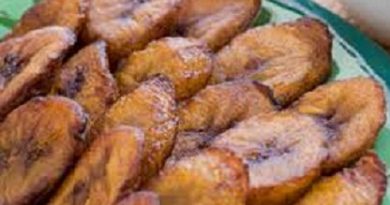

interesting!
Pingback: Local Names of Spices, Herbs, Seeds & Fruits, in Nigeria - 9jafoods
Pingback: Garden Egg ~ Amazing Benefits of Garden Eggs - 9jafoods